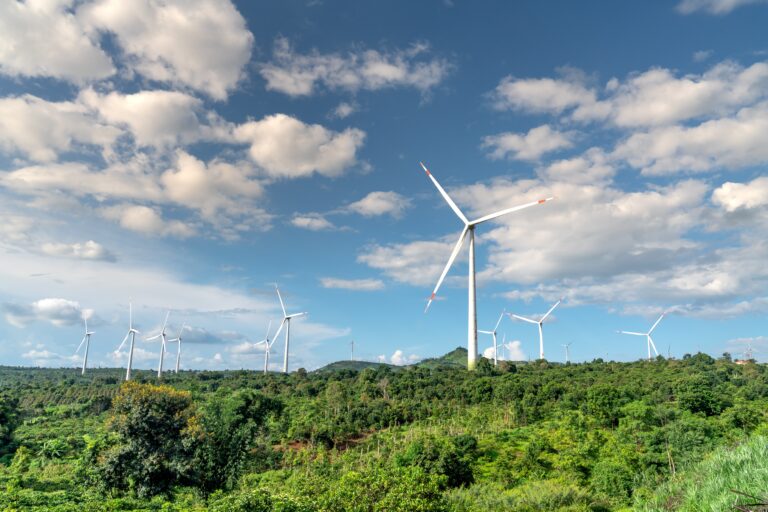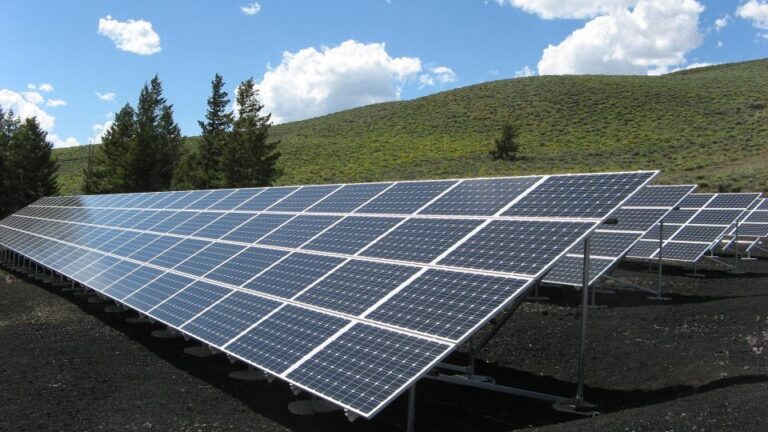Geothermal Energy Technology: Power Plants and Heat Pumps Explained
Geothermal energy technology generates power by harnessing natural heat from the Earth’s center. Because it emits few greenhouse gases and has a low environmental effect, this sustainable energy source is becoming increasingly essential in the battle against climate change.
Geothermal energy is a dependable and sustainable form of energy that can power homes, companies, and towns. It is a renewable energy source that can help decrease our reliance on nonrenewable materials.
Geothermal energy is anticipated to play a major part in the renewable energy sector as the world proceeds to transition to a more sustainable future. Its ability to provide a consistent and dependable source of energy makes it an appealing choice for nations seeking to lower their carbon footprint while meeting their energy requirements.
Table of Contents
Geothermal Power Plants

Geothermal power stations are places that produce energy by utilizing the earth’s natural heat. As the world tries to decrease its dependence on fossil fuels and combat climate change, this renewable energy source is gaining popularity.
Geothermal Power Plant Types
Geothermal power facilities are classified into three types: dry steam, flash steam, and binary cycle. Dry steam plants produce energy by using vapor that naturally emerges from underground pools to power turbines. Flash steam plants, on the other hand, generate steam by pumping hot water up from the earth and quickly depressurizing it. A heat exchanger is used in binary cycle facilities to move heat from hot water to a secondary fluid, which then vaporizes and drives a turbine.
How Geothermal Power Plants Function
The fundamental procedure is the same regardless of the sort of geothermal electricity plant. To begin, a well is dug beneath the earth’s surface into a geothermal reservoir, which is a layer of heated rock and water. The hot water or steam is then taken to the top and used to power a turbine that produces energy. The cooled water or vapor is then returned to the tank to be reheated and repurposed.
The Benefits and Drawbacks of Geothermal Power Plants
One of the primary benefits of geothermal power plants is that they generate energy without releasing greenhouse gases or other contaminants into the atmosphere. They also have a tiny footprint and can be constructed in distant locations, which reduces the need for long-distance transmission lines. Furthermore, geothermal power plants can provide a dependable source of baseload power, which means they can run constantly and help maintain the system.
However, there are some drawbacks to geothermal energy facilities. One limitation is that they can only be constructed in regions with geothermal reservoirs, limiting their possible sites. Furthermore, the digging and building processes can be costly and time-consuming. Finally, there is some concern about the potential for geothermal reservoirs to be depleted over time, despite the fact that this is a comparatively new technology and more study is required to completely comprehend its long-term effects.
Finally, geothermal power stations are a potential sustainable energy source that can help reduce our dependence on fossil fuels and fight climate change. While there are some challenges with this technology, continued study and development may help it reach its maximum potential in the coming years.
Geothermal Heat Pumps
Geothermal heat pumps are a form of heating and cooling device that regulates interior temperatures by utilizing the earth’s natural heat. They are becoming more common as a result of their energy economy and environmental friendliness. In this piece, we will look at the various kinds of geothermal heat pumps, how they function, and their benefits and drawbacks.
Geothermal Heat Pump Definition
Geothermal heat pumps, also known as ground-source heat pumps, are a form of HVAC device that regulates interior temperatures by utilizing the earth’s natural heat. In the winter, they transmit heat from the ground to the structure, and in the summer, they transfer heat from the building to the ground.
Geothermal Heat Pump Types
Geothermal heat exchangers are classified into three types: closed-loop, open-loop, and combination.
Closed-loop devices move a water-antifreeze mixture through a network of underground pipelines that capture heat from the earth. The heated substance is then poured into the structure, where it heats the air or water.
Groundwater is used as the heat supply in open-loop devices. Water is drawn from a well, circulated through the heat exchanger, and then returned to the earth.
Closed-loop and open-loop components are combined in hybrid devices. The bulk of the year, they use a closed-loop system, but in the summer, when the groundwater is warmer, they transition to an open-loop system.
How Geothermal Heat Pumps Function
Geothermal heat pumps operate by utilizing the earth’s consistent warmth. Throughout the year, the ground temperature stays generally constant, varying from 45 to 75°F based on region. The heat pump circulates a fluid through a network of underground pipelines, absorbing heat from the earth and moving it to the structure in the winter. The procedure is reversed in the summer, when the heat pump transfers heat from the structure to the earth.
The Benefits and Drawbacks of Geothermal Heat Pumps
The energy economy of geothermal heat systems is one of their primary benefits. When compared to conventional HVAC systems, they can save up to 70% on energy usage. They are also ecologically beneficial, as they emit no greenhouse gases.
Geothermal heat systems, on the other hand, can be costly to install, with prices varying from $10,000 to $30,000 based on the size of the system. They also necessitate a substantial amount of room for the subterranean pipelines, which can be difficult for smaller homes.
Finally, geothermal heat pumps are an ecologically friendly and energy-efficient choice for heating and cooling structures. While they can be costly to implement, they save money in the long run and decrease dependence on fossil fuels.
Comparison between Geothermal Power Plants and Heat Pumps
Geothermal power facilities and heat pumps are two kinds of renewable energy that are gaining popularity. While they both produce energy from the earth’s natural heat, there are some significant variations between the two.
Distinctions Between Geothermal Power Plants and Heat Pumps
Geothermal power stations are large-scale operations that produce energy by harnessing the natural heat of the earth. They take heated water or steam from deep underground via a network of pipelines, which is then used to power generators and produce energy. Heat pumps, on the other hand, are smaller-scale devices that heat and cool structures by utilizing the earth’s natural heat. They operate by circulating a fluid through a network of underground pipelines, which absorbs heat from the soil and transmits it to the structure.
Comparability of Geothermal Power Plants and Heat Pumps
Geothermal electricity facilities and heat pumps have some parallels despite their differences. Both produce energy from the earth’s inherent heat, making them renewable and sustainable forms of energy. They also have a minimal environmental effect, emitting little to no greenhouse gas pollution.
Heat pumps are usually more appropriate for domestic and business use than geothermal power plants. This is due to the fact that heat pumps are smaller and less expensive, making them simpler to install and operate. They are also more flexible because they can be used to heat and chill. Geothermal power plants, on the other hand, are best suitable for large-scale operations and are usually used only by utilities.
The Future of Geothermal Energy Technology
In recent years, geothermal energy technology has advanced significantly, with advances in drilling methods and power plant construction resulting to greater efficiency and cost-effectiveness. Geothermal energy currently accounts for only 0.3% of global electricity output, but there is considerable room for growth and development in the future.

One of the primary benefits of geothermal energy is its dependability, as it can provide baseload electricity that is not affected by weather. As a result, it is an appealing choice for nations seeking to reduce their dependence on fossil fuels while increasing their green energy capacity. Furthermore, geothermal energy can be used for warmth and ventilation as well as power production, expanding its potential uses even further.
However, there are some obstacles that must be overcome in order to completely achieve the potential of geothermal energy. One of the major problems is the expensive initial costs of digging and constructing geothermal power facilities. Furthermore, not all places have appropriate geothermal resources, limiting the technology’s global reach.
Despite these obstacles, there are possibilities for geothermal energy technology’s future. New drilling methods and materials developed through research and development could help to reduce expenses and improve efficiency. Furthermore, government incentives and policies that promote geothermal energy growth could help to surmount some of the financial barriers.
Overall, the future of geothermal energy technology appears bright, with substantial growth and development possibilities in the coming years.
Conclusion
Geothermal energy technology is an important component of the green energy balance that can assist us in achieving a sustainable and low-carbon future. We can produce energy and heat by harnessing the natural heat of the planet without releasing greenhouse emissions or depending on finite fossil fuels.
The advantages of geothermal energy technology are numerous and substantial. It is a constant and dependable source of energy that can provide baseload power, which means it can run continuously and supplement other sporadic green sources such as wind and solar. It is also a native energy source that can decrease our reliance on foreign oil and gas while also creating local employment and economic development.
Furthermore, when compared to other energy sources, geothermal energy has a low environmental impact. It does not pollute the air or water, and it has a minimal environmental effect. It can also aid in the mitigation of climate change by lowering greenhouse gas pollution and promoting the shift to a low-carbon economy.
As a result, we must encourage and engage in geothermal energy technology. Governments, companies, and people can all contribute to the advancement of this technology. Governments can provide benefits and policies that promote geothermal growth, such as tax breaks, feed-in tariffs, and simplified permitting procedures. Businesses can engage in geothermal initiatives and tools, as well as integrate geothermal energy into their environmental plans. Individuals can support geothermal energy by purchasing power generated by geothermal sources and pushing for geothermal growth in their areas.






